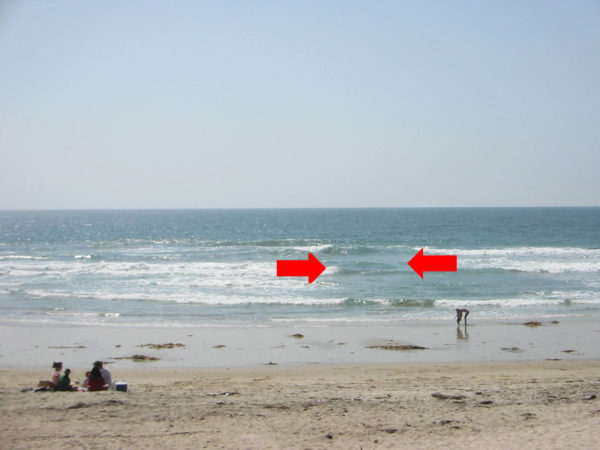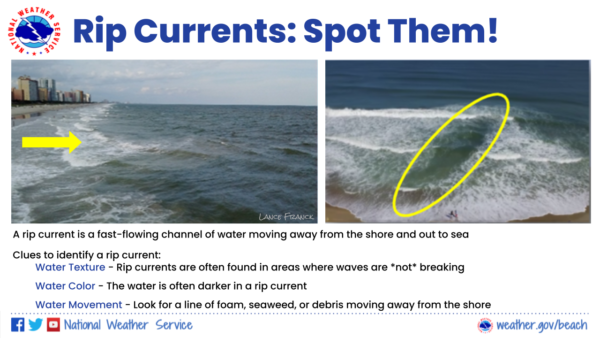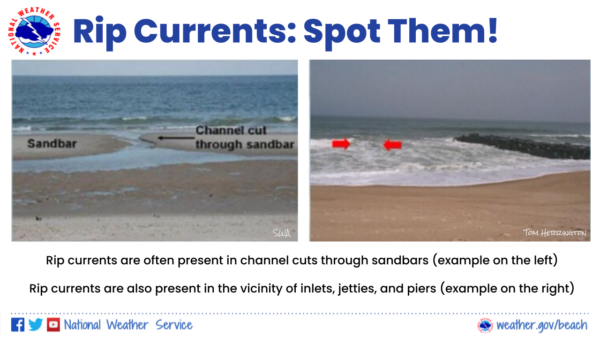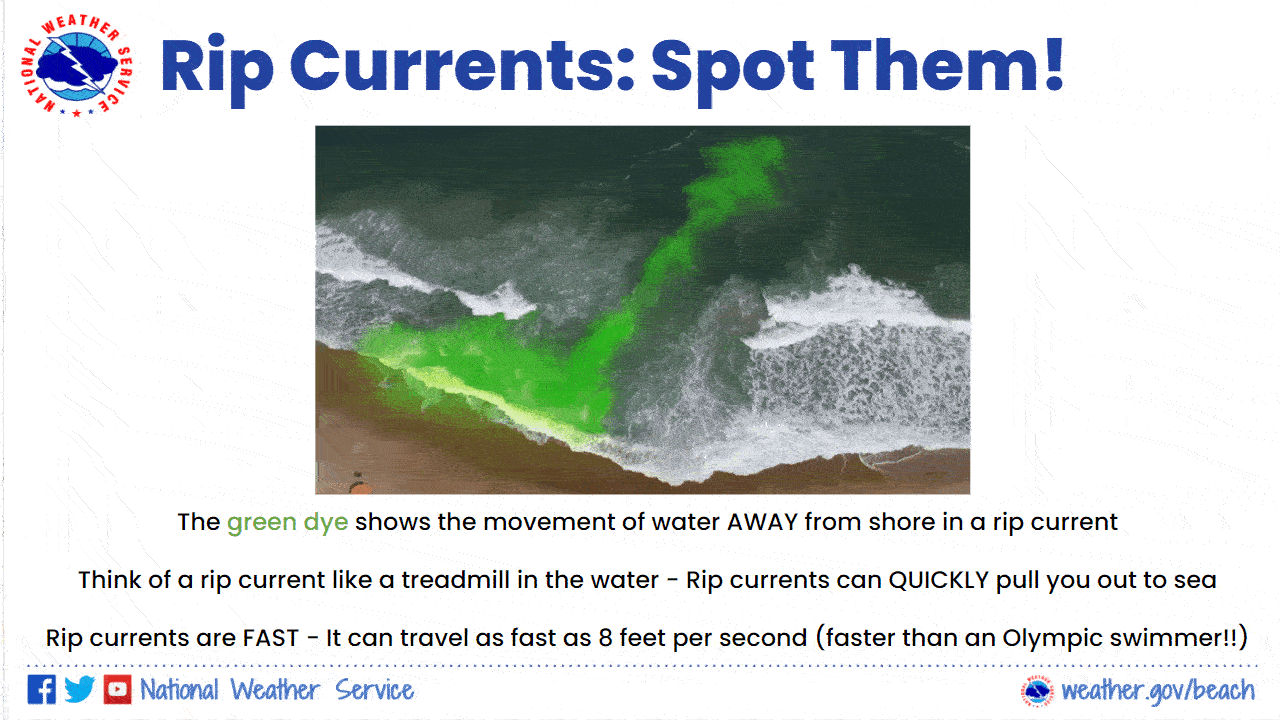Gulf Coast Rip Current Awareness Week — Day 2: All About Rip Currents

Image from NWS Rip Current Photos (weather.gov/ripcurrent-photos).
Did you know that waves do not need to be huge for rip currents to form? Rip Currents are strongest at low tide but can form at any time.
Clues to Identify a Rip Current:
- Water Texture – Rip currents are often found in areas where waves are *not* breaking. The flat water located between breaking waves is actually a rip current flowing away from the beach out to sea.
- Water Color – The water is often darker in a rip current. White foam is present where waves are breaking and there are no rip currents.
- Water Movement – Look for a line of foam, seaweed, or debris moving away from the beach.

Rip currents are often present in channel cuts through sandbars. Rip currents can also occur where there are hard structures (in the vicinity of inlets, jetties, or piers) or even rocks jutting out into the Gulf.

Rip currents are easier to identify from an elevated vantage point such as a lifeguard stand, dune line, or even at the beach access point.

Category: ALL POSTS, Met 101/Weather History















